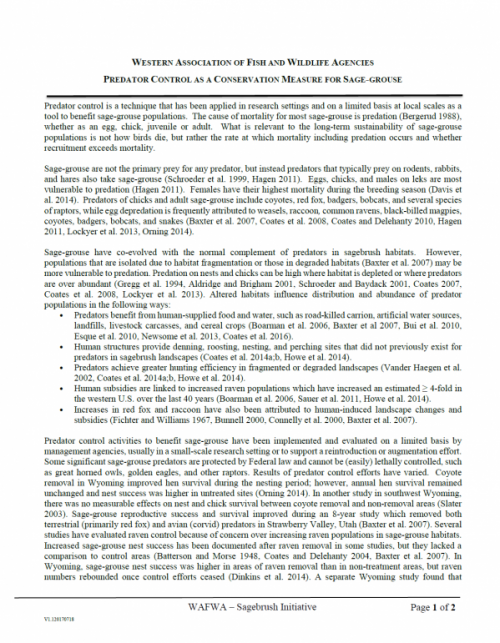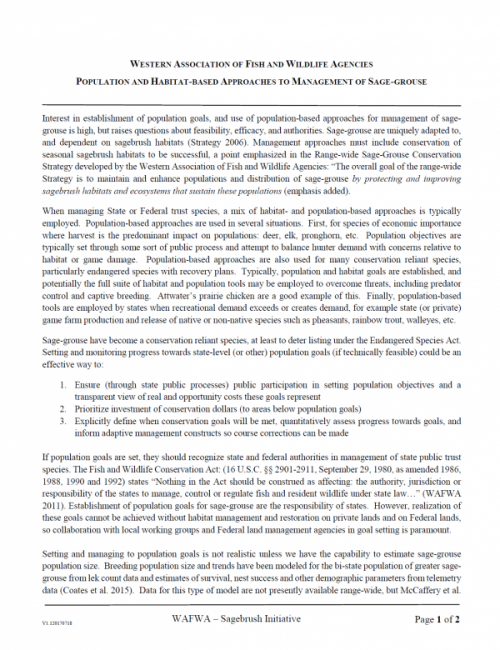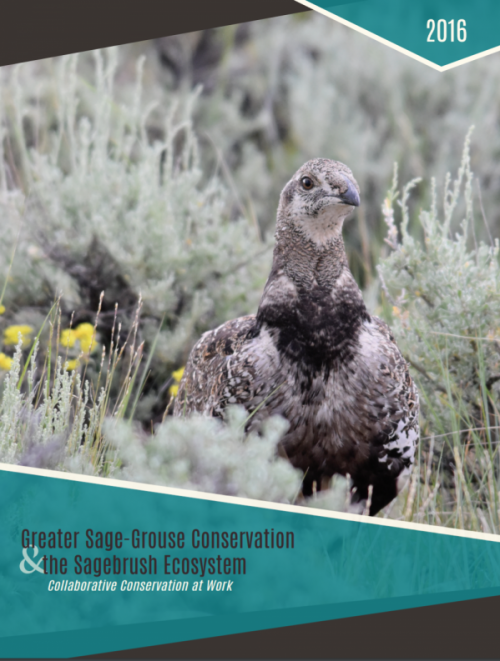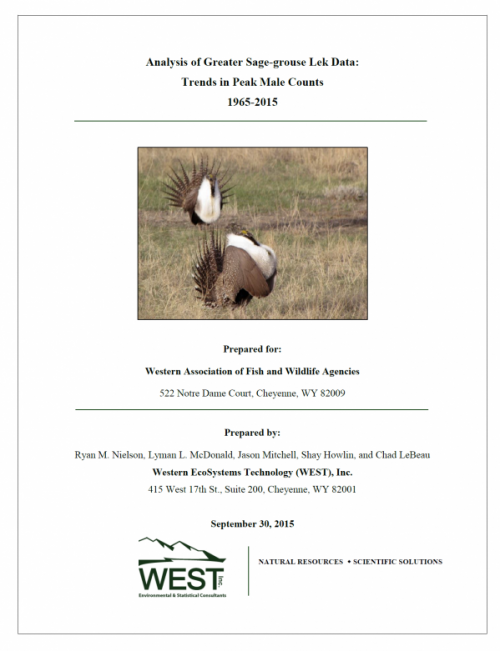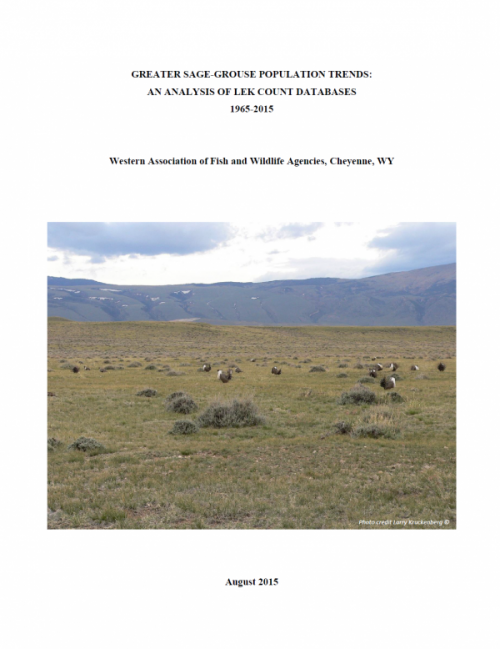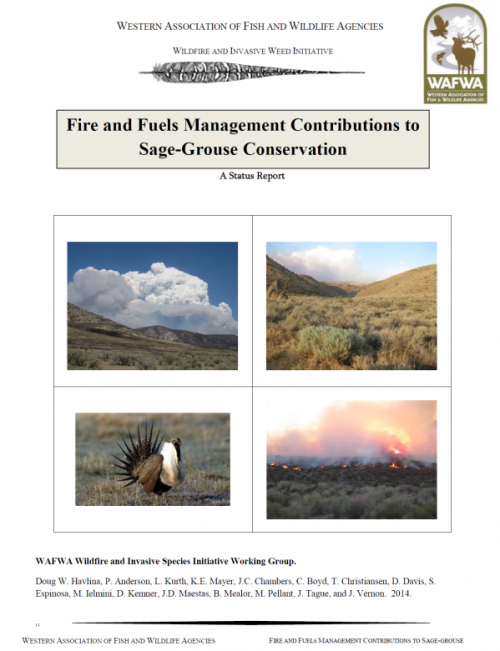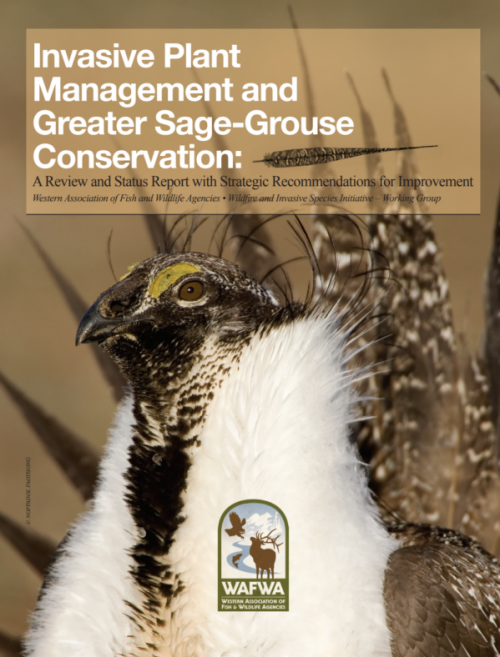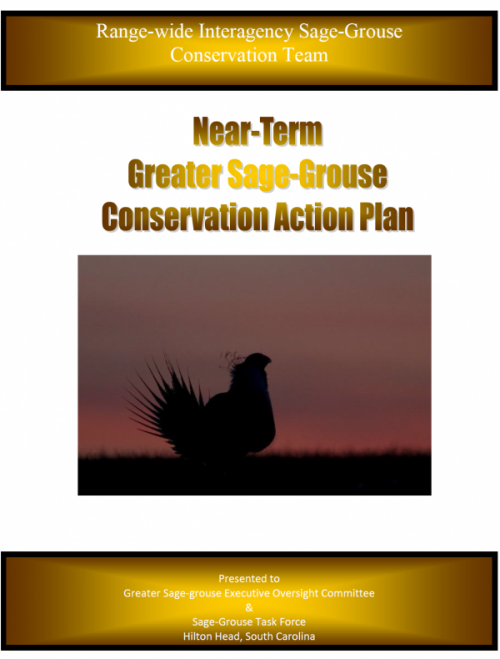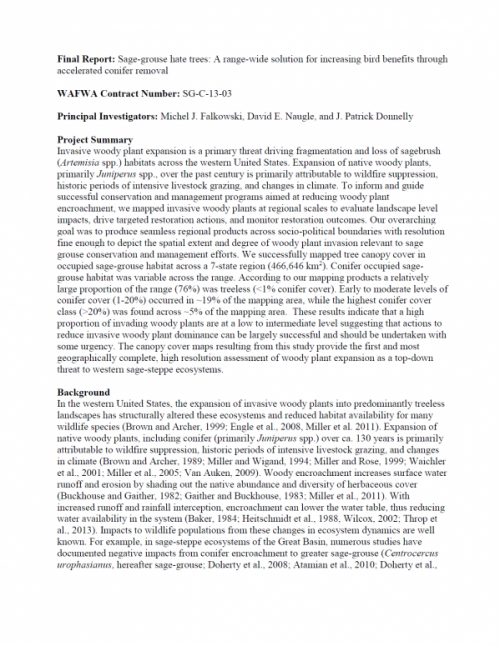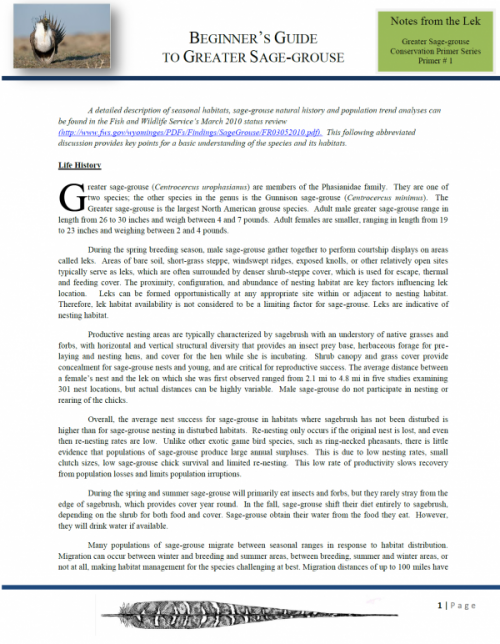Home
›
White Paper: PREDATOR CONTROL AS A CONSERVATION MEASURE FOR SAGE-GROUSE
Posted by WAFWA on July 1, 2017
Predator control is a technique that has been applied in research settings and on a limited basis at local scales as a tool to benefit sage-grouse populations. The cause of mortality for most sage-grouse is predation (Bergerud 1988), whether as an egg, chick, juvenile or adult. What is…
Read More
White Paper: POPULATION AND HABITAT-BASED APPROACHES TO MANAGEMENT OF SAGE-GROUSE
Posted by WAFWA on July 1, 2017
Interest in establishment of population goals, and use of population-based approaches for management of sagegrouse is high, but raises questions about feasibility, efficacy, and authorities. Sage-grouse are uniquely adapted to, and dependent on sagebrush habitats (Strategy 2006). Management approaches must include conservation of seasonal sagebrush habitats to…
Read More
A Collaborative Story of Greater Sage-Grouse & Sagebrush Conservation
Posted by WAFWA on July 1, 2016
Across eleven states and over 173 million acres, U.S. federal and state agencies, private landowners, and partners are coming together to protect the Greater sage-grouse with a conservation approach built on coordination and partnership. This collaboration led to the historic decision by the U.S. Fish and Wildlife Service (FWS) in…
Read More
Analysis of Greater Sage-grouse Lek Data: Trends in Peak Male Counts 1965-2015
Posted by WAFWA on September 1, 2015
Trends in greater sage-grouse breeding populations are typically indexed by determining the peak number of males attending a lek in a lekking season. Numerous studies have estimated negative trends in sage-grouse breeding populations over time via data collected for the last 50 years. However, the inherent bias in data collection…
Read More
GREATER SAGE-GROUSE POPULATION TRENDS: AN ANALYSIS OF LEK COUNT DATABASES 1965-2015
Posted by WAFWA on August 1, 2015
Counts of males attending leks in the spring have been the primary means employed by states to monitor status of greater sage-grouse (Centrocercus urophansianus) populations for over 75 years. Despite limitations and potential biases, lek count data remain the only long-term, range-wide dataset available for evaluating trends in sage-grouse populations.
Read More
A Status Report: Fire and Fuels Management Contributions to Sage-Grouse Conservation
Posted by WAFWA on July 1, 2015
Within big sagebrush (Artemisia tridentata) communities, expansion of invasive plants and changes in wildfire patterns have emerged as the greatest threat to sage-grouse habitats, particularly in the western part of its range. Feedback cycles between invasive species and large intense wildfires effectively fragment habitats, reduce sagebrush cover, and create fire-prone…
Read More
Invasive Plant Management and Greater Sage-Grouse Conservation: A Review and Status Report with Strategic Recommendations for Improvement
Posted by WAFWA on March 1, 2015
In 2013, the U.S. Fish and Wildlife Service (USFWS) Conservation Objectives Team (COT) identified wildfire and the associated conversion of low- to mid-elevation sagebrush (Artemisia tridentata) habitats to invasive annual grass-dominated vegetation communities as the two primary threats to the sustainability of Greater sage-grouse (Centrocercus urophasianus, hereafter GRSG) in the…
Read More
Near-Term Greater Sage-Grouse Conservation Action Plan
Posted by WAFWA on September 11, 2012
In December 2011, Wyoming Governor Matt Mead and Secretary of the Interior Ken Salazar co-hosted a meeting to address coordinated conservation of the Greater sage-grouse (sage-grouse) across its range. Ten states within the range of the sage-grouse were represented, as were the U.S. Forest Service (USFS), the Natural Resources Conservation…
Read More
Sage-grouse hate trees: A range-wide solution for increasing bird benefits through accelerated conifer removal
Posted by WAFWA on September 1, 2010
Invasive woody plant expansion is a primary threat driving fragmentation and loss of sagebrush (Artemisia spp.) habitats across the western United States. Expansion of native woody plants, primarily Juniperus spp., over the past century is primarily attributable to wildfire suppression, historic periods of intensive livestock grazing, and changes in climate.
Read More
Greater Sage-grouse Conservation Primer Series
Posted by WAFWA on July 1, 2010
A Primer: BEGINNER’S GUIDE TO GREATER SAGE-GROUSE: abbreviated discussion provides key points for a basic understanding of the species and its habitats. Primer 2: WHO’S ON THE LEK A GUIDE TO PLAYERS Primer 3: SAGE-GROUSE MAPPING AND PRIORITY HABITATS Primer 4: OVERVIEW OF GREATER SAGE-GROUSE AND ENDANGERED SPECIES ACT ACTIVITIES
Read More
